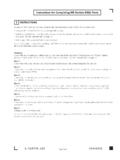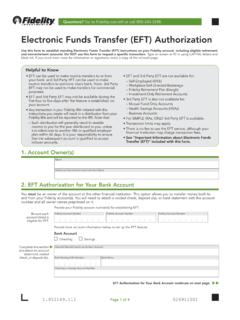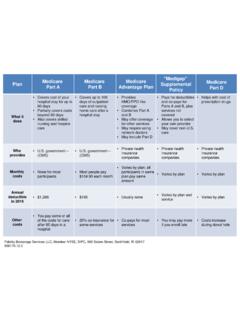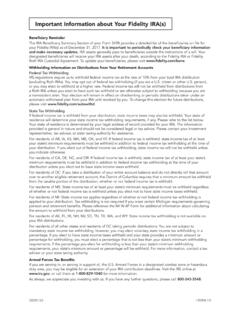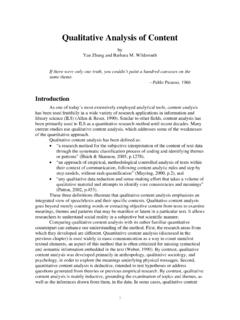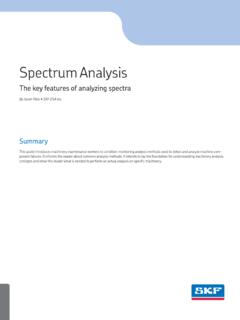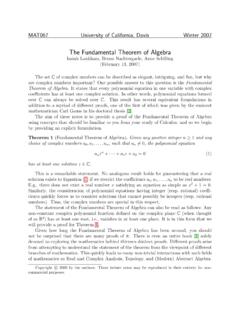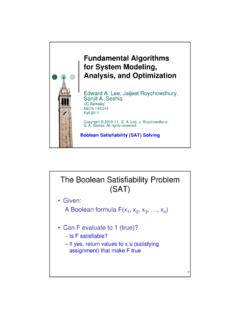Transcription of Applying fundamental & technical analysis in stock investing
1 Applying fundamental & technical analysis in stock investing 2017 2 Software and mobile apps to enhance your trading experience Live demonstration of research and trading tools Resources for making more prudent and informed decisions Develop an Ongoing Strategy with Fidelity 3 Bringing It All Together Today s Agenda Tool Demonstrations Overview of fundamental & technical analysis Explore ways to use fundamental and technical analysis to help make more informed trading decisions and show you the tools Fidelity offers that can help along the way. fundamental analysis CAN HELP DETERMINE WHAT TO BUY OR SELL 5 Getting started with stock investing Create and grow your portfolio Increase income What should you consider? Timeframe what time are you looking to invest in stocks? Investment how much money do you want to put towards this strategy? Exit strategy what is your plan for getting out of this investment?
2 Why do you invest in stocks? 6 Getting started with stock investing Make a list Research - make a list of stocks to consider Analyze - narrow down your list Buy - place your trades Post -Trade Monitor - track performance and news to determine next steps 7 fundamental analysis What is it? The study of a company measures used may include: Quality of management Labor relations Inventory control Return on equity, assets, Why should you use it? Helps to understand if the company is a good company does it meet your expecations Where can I learn more? View Introduction to fundamental analysis from the Fidelity Learning Center Screenshot is for illustrative purposes only. 8 stock Research Experience A snapshot of the selected stock Screenshot is for illustrative purposes only. Research > Stocks: Enter a symbol, select Snapshot 9 stock Research Experience What s unique about it?
3 Provides a dashboard for you to easily access everything you need to help make investment decisions in one place Displays quotes, news, dividends, earnings, company profile, and the Equity Summary Score by Thomson Reuters Starmine all on one page Provides fundamental analysis and Recognia technical analysis to save time on research and provide an overall assessment of a company's valuation, quality, growth stability, and financial health Review Social Sentiment and Top Competitors information for a selected security Where can I learn more? View Getting the most out of Fidelity s stock research from the Fidelity Learning Center Screenshot is for illustrative purposes only. 10 Equity Summary Score by Thomson Reuters Starmine A single stock rating based on third-party analyst opinions, weighted by past accuracy Screenshot is for illustrative purposes only. Research > Stocks > Enter Company or Symbol 11 Equity Summary Score What s unique about it?
4 In conjunction with other criteria, screen stocks to help identify those you may want to include or exclude from further analysis Monitor the consolidated opinion of the independent research providers that are following the stocks currently in your portfolio Where can I learn more? View Power your stock analysis with the Equity Summary Score from Thomson Reuters StarMine from the Fidelity Learning Center The Equity Summary Score is provided for informational purposes only, does not constitute advice or guidance, and is not an endorsement or recommendation for any particular security or trading strategy. The Equity Summary Score is provided by Thomson Reuters StarMine, an independent company not affiliated with Fidelity Investments. For more information and details, go to 12 Earnings: work with common valuation ratios Price-to-Book (P/B) Your share of the assets Stocks price divided by its book value per share Price/Book ratio compares the market s valuation of a company to its book value according to its financial statements Price-to-Earnings (P/E) Comparison of a company s current share price to its earnings per share during a specified time period P/E Ratio - Closing stock Price / Annual Earnings per share Price-to-Sales (P/S) Value of revenue A stock s price divided by sales per share for a specified period of time Time periods measure include: Most Recent Quarter (MRQ) and Trailing 12 Months (TTM) Screenshot is for illustrative purposes only.
5 13 fundamental Four provided by S&P Capital IQ Combining these 4 metrics provides you with a broad overview of the company s financial results, the market s demand for the company s shares, and how much financial risk the investment carries Screenshot is for illustrative purposes only. Research > Stocks > Enter Company or Symbol 14 Use fundamentals to assess strengths & weaknesses Valuation Is a company overvalued or undervalued in relation to its peers. Quality Assesses a company s overall earnings quality. How well is a company being operated? Growth Stability Assesses how stable the growth of earnings and cash flow has been over time. Financial Health Evaluates a company s debt and interest obligations. Does it have a strong balance sheet? Screenshot is for illustrative purposes only. 15 stock Screener A great resource to help you easily match your ideas with potential investments Screenshot is for illustrative purposes only.
6 Research > Stocks > stock Screener 16 stock Screener What s unique about it? Leverage predefined screens to see how industry experts identify stocks with distinct characteristics Add your own stock ideas to the results list to see how they compare Choose from over 140 criteria to focus stock characteristics based on your specific goals Access anywhere from any device Where can I learn more? Visit the Getting started with the stock Screener video from the Fidelity Learning Center Screenshot is for illustrative purposes only. technical analysis CAN HELP DETERMINE WHEN TO BUY OR SELL 18 technical analysis What is it? The study of past market data stock prices are determined by supply and demand Shifts in supply and demand cause reversals in trends Trends and reversals in trend can be seen in charts Chart patterns tend to repeat themselves Why should you use it? Helps to determine the potential opportunities when entering or exiting a trade Screenshot is for illustrative purposes only.
7 19 Assumptions behind technical analysis Prices in freely traded markets are determined by economic principles of supply and demand Exceptions and emotions are an important factor in supply and demand Price discounts everything All information related to the security is reflected in the price Prices are non-random but not necessarily predictable Prices have direction and tend to travel in observable trends Behavior and history in the marketplace will repeat itself Price patterns summarizing behavior are fractal Patterns can work in different time frames intraday, daily, weekly, monthly charts Screenshot is for illustrative purposes only. 20 Limits of technical analysis Not a perfect investment method Requires study, experience in markets, patience, discipline, knowledge of technical methods, and a positive attitude Patterns, trends, and indicators are never precise An art, not a science Charts need human interpretation technical analysis is subjective Susceptible to the same emotions and cognitive bias as that of all investors Where can I learn more?
8 Read What is technical analysis ? on the Fidelity Learning Center Screenshot is for illustrative purposes only. 21 Charts A visual representation of data that can help spot patterns and trends Security analysis requires charts to analyze earnings and sales growth technical analysis requires charts to analyze price behavior Screenshot is for illustrative purposes only. 22 Bar chart What does it include? Open, High, Low, close Volume for a specific time interval, for example: day, hour, month What are some advantages? More common Easily read Provides full range of trading for time interval Volume for a specific time interval, for example: day, hour, month Shows volatility from day-to-day Screenshot is for illustrative purposes only. 23 Candlestick chart What does it include? Open, High, Low, close Volume for a specific time interval, for example: day, hour, month What are some advantages? Is more visual patterns and trends are easier to see Uses color to show difference between open and close price white for close > open and black for close < open Shows volatility from open to close Where can I learn more?
9 Read What are charts? on the Fidelity Learning Center Screenshot is for illustrative purposes only. 24 Trends & Trend Lines technical analysis is based on one major principle trend. Screenshot is for illustrative purposes only. 25 The importance of trend Why is trend important? Trends arise from the interaction of buyers and sellers Trend identification is the primary tool in price forecasting analysis Trend s direction is described by the relative location of peaks and troughs Upward trend (successively higher peaks and higher troughs) Downward trend (successively lower peaks and lower troughs) Sideways trend (consolidation period where there is no clear direction in prices) Screenshot is for illustrative purposes only. 26 Understanding a few assumptions Trends tend to continue rather than reverse, though eventually they end. Trends are influenced by the next longer and next shorter trend.
10 Trends are fractal they occur over different time periods (hourly, daily, monthly) but their behavior is the same. Trends are not mechanical methods that can easily be programmed and tested on computers. Screenshot is for illustrative purposes only. 27 Trend lines What is a trend line? While trend is a direction, a trend line is an attempt to define and utilize that direction. They connect reversal points of the same magnitude and orientation. Drawn from peak to peak and from trough to trough. Types of trend lines Upward sloping line drawn from trough to higher trough Downward sloping line drawn from peak to lower peak Support line drawn through troughs at the same price level Resistance line drawn through peaks at the same price level Screenshot is for illustrative purposes only. 28 Using trend lines Things to know: Trend lines are drawn into the future because they continue to provide support and resistance.

